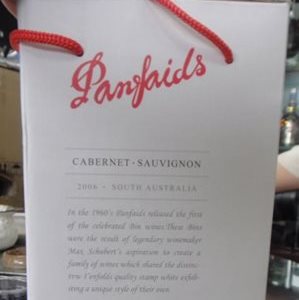New app aims to combat counterfeit wine in Chinese market
Date£º
2014-04-23 11:11 Source£º
http://www.foodmag.com.au Author:
Aoife Boothroyd Translator:
As the presence of counterfeit wine continues to rise in China, WA-based Linkar Group together with the Guangdong Guangxin Information Industry Development Co have developed an app and tracing technology to help distinguish fake wine from the genuine product.

A new labelling system on the wine bottles enables a tracing system to be activated and the wine tracked. The tracing system comprises a collection of search engines that enable consumers, retailers, wholesalers, distributors and suppliers to access data related to their wine, and the wine labels feature coding that can be scanned within a smartphone app.
Margaret River¡¯s McHenry Hohnen Wine will be the first winery to utilise the technology, with its first shipment scheduled to leave for China next month, The West reports.
Co-owner of McHenry Hohnen, Murray McHenry says that in addition to a direct loss of income, counterfeit wine has the potential to damage the integrity of a wine brand.
"As a small premium producer, it is vital that wines sold into the China market are protected from being copied, which destroys the integrity of our crafted product," McHenry told The West.
"By having a tracking system on each carton and bottle we will be able to ensure our premium wines are what the consumer is purchasing.
"Australia is the second-biggest exporter to China, and growing."
Operating director of Linkar, Max Ma said that as the Chinese market is still relatively new to wine, consumers find it difficult to distinguish between a genuine product and a fake.
"Bottles use the original label, artwork and trademarked name, but the name and logo are altered slightly to look like the original, and it's different enough not to be a counterfeit and yet, still fool consumers,"said Ma. "The inability to read French or English makes it even more difficult for some unsuspecting buyers.
"Another method is for counterfeiters to buy empty wine bottles and simply refill them with cheap wine. Or they use a syringe to remove some or all of the wine from a bottle and refill it with cheap wine.
"Today, high-end restaurants, hotels, collectors and auction houses regularly smash empty bottles after consuming them to avoid their re-entry into the marketplace."
Ma believes that the Chinese government will eventually enforce a similar system across all food and wine products to ensure authenticity.
A number of key Australian brands including Penfolds and Henschke have fallen victim to the Chinese counterfeit market of the past number of years.
Pinghui Xiao, PhD candidate, Business division, University of South Australia said that prestige wine brands are easily found in the Chinese market and can be copied with inferior ingredients to make an attractive profit margin.
According to Xiao, an emerging domestic wine region in China was exposed for making counterfeit popular wine brands by using no grapes at all. Instead they added alcohol flavours into water to make ¡®fake wine¡¯ which caused the entire region to suffer heavily.